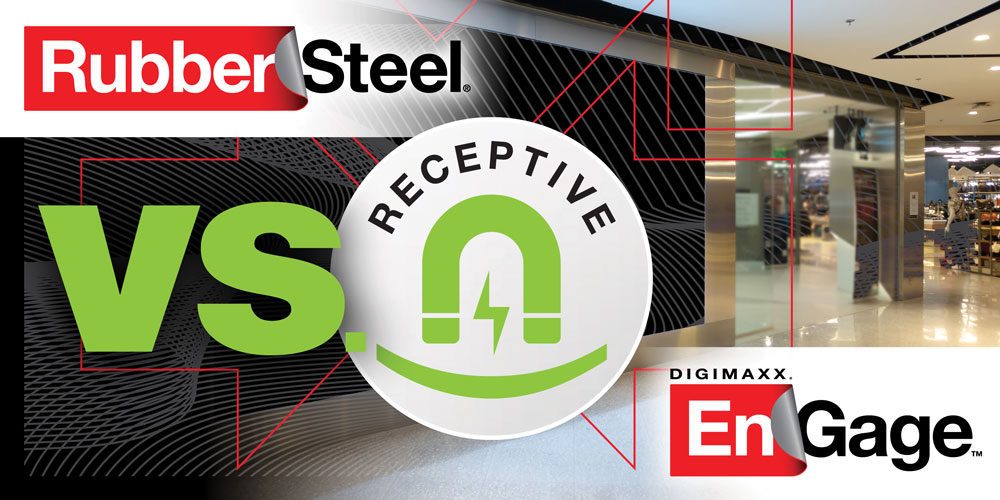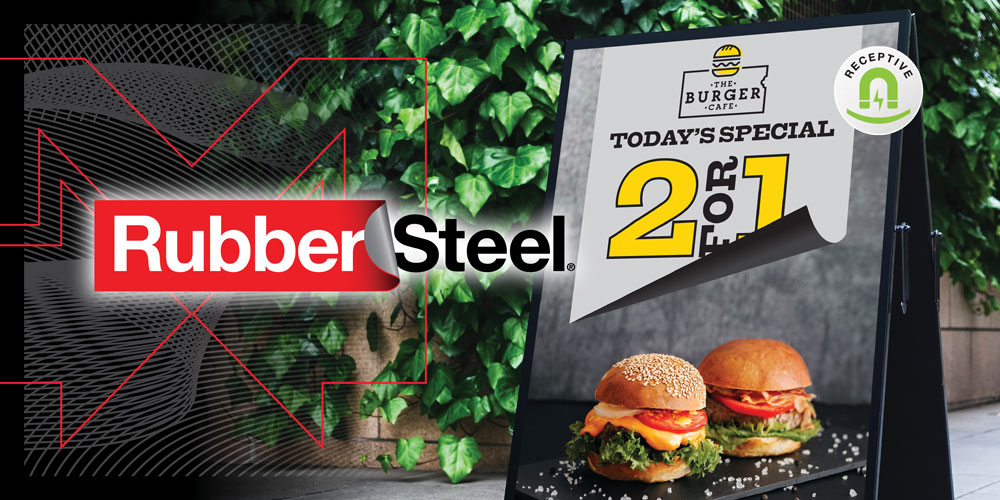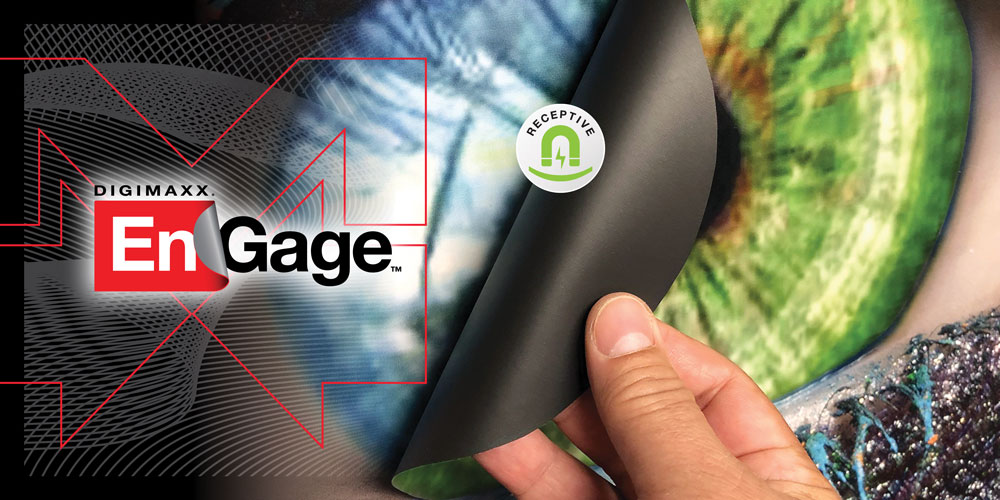RubberSteel vs. EnGage: A Deep Dive into Magnetic Receptive Materials

Understanding Magnetic Receptive Materials
Magnetic receptive materials are non-magnetic surfaces that attract magnets, allowing magnetic objects to adhere without these materials holding any magnetic charge themselves. Think of magnetic receptive materials as a versatile “canvas” that enables magnetic displays, interactive boards, or signage. They’re widely used in retail, offices, educational settings, and event spaces where frequent updates or interchangeable displays are essential. Let’s look into two leading options, RubberSteel and EnGage, to explore how each one uniquely meets different magnetic needs.


The RubberSteel and EnGage Difference
Both RubberSteel and EnGage are magnetic receptive materials designed to offer flexibility for various applications, but each comes with its own set of advantages. While both allow for a solid magnetic base and support frequent changes or adjustments to magnetic displays, they cater to different use cases due to differences in thickness, weight, width, and more.
RubberSteel: The Versatile Workhorse

RubberSteel is a robust, magnetic receptive material often selected for its durability and flexibility in a range of applications. At a standard thickness of .025 inches, RubberSteel provides a strong foundation for magnets, making it ideal for projects where a solid magnetic hold is essential. This thicker profile enhances magnet adhesion, ensuring magnets stay in place even with frequent handling or heavy items attached.
RubberSteel is available in two main versions: Printable Matte White Vinyl and Plain with Adhesive, allowing users to choose the best option for their specific needs:
- Printable Matte White Vinyl: This option allows for direct printing on the surface, making it ideal for creating personalized magnetic displays. Users can print interchangeable signs, point-of-sale displays, or menu boards directly onto RubberSteel, adding a layer of customization and polish. However, it requires a separate magnet layer underneath, as RubberSteel itself is not inherently magnetic.
- Plain with Adhesive: This version serves as an adhesive base layer for magnets. Its sticky backing makes it ideal for surfaces where a permanent or semi-permanent magnetic layer is needed, such as on walls, metal fixtures, display boards, or whiteboards.
With a maximum width of 48 inches (stocked in 24.375 inches), RubberSteel can support both standard and wide-format applications. Its durability ensures it stands up to frequent use, making it suitable for professional settings, educational environments, and high-traffic areas.
EnGage: The Lightweight Champion

Engage takes a different approach, offering a much thinner option with a standard thickness of .011 inches. This material is designed with large-scale projects in mind, offering both lightweight handling and super wide format options. The thinner profile means it’s less rigid than RubberSteel, making it easy to ship, install, and handle in super wide applications.
- Lightweight: EnGage is easier to transport and handle than RubberSteel, saving on shipping costs and allowing for simple, fast installations. This lightweight quality makes Engage a preferred choice for projects that require regular setup and takedown or installations in locations where ease of handling is paramount.
- Layering Capabilities: EnGage’s thin profile allows for creative layering, meaning users can overlay multiple Engage sheets to create depth or unique, multi-layered designs. This capability makes it ideal for interactive applications, such as layered murals, storytelling walls, or interchangeable game boards.
With widths of 54 and 60 inches, EnGage is specifically crafted for super wide-format projects, such as expansive interactive displays or large menu boards. Its flexibility in size makes it a great choice for businesses looking to implement large-scale magnetic setups without the added weight of thicker materials.
Choosing the Right Material
Selecting between RubberSteel and EnGage depends on several factors, each tailored to the unique needs of your project:
1. Size and Format: RubberSteel’s width range (up to 48 inches) is ideal for medium to wide formats, while EnGage’s super-wide options (up to 60 inches) shine in extra-large applications.
2. Magnetic Hold Strength: For projects requiring a strong magnetic hold, RubberSteel’s .025 thickness provides better adhesion, making it ideal for heavier magnetic displays or applications where magnets need to remain secure over time.
3. Weight and Handling: EnGage’s lightweight profile is beneficial for applications where ease of handling is critical. EnGage’s lighter material could save time and reduce overall setup efforts if the project demands frequent moving or installation.
4. Customization Options: Both RubberSteel and EnGage support direct printing, allowing for branded, custom designs. RubberSteel’s printable vinyl surface offers an especially crisp, professional look, while EnGage’s flexibility supports large, printed visuals without the added weight.
5. Versatility in Use Cases: While both materials offer a broad range of uses, EnGage’s super wide format and layering potential open up additional options for oversized or multi-dimensional displays, while RubberSteel’s strength and durability make it a go-to for standard displays requiring more magnetic adhesion.
Bringing Magnetic Concepts to Life
Understanding the properties of RubberSteel and EnGage allows users to select the best material for their vision. For smaller, magnetically intense displays, RubberSteel is the sturdy choice, perfect for office boards, point-of-sale displays, or art installations. EnGage, on the other hand, shines in grand-scale applications where ease of handling and the wide format makes a difference, transforming walls into large interactive canvases or dynamic workspaces. Whichever you choose, RubberSteel and EnGage offer flexible, efficient solutions for bringing your magnetic ideas to life.
If you’re ready to explore the advantages of magnetic receptive materials, we’re here to help. Contact one of our product specialists for more information and resources to get started.

